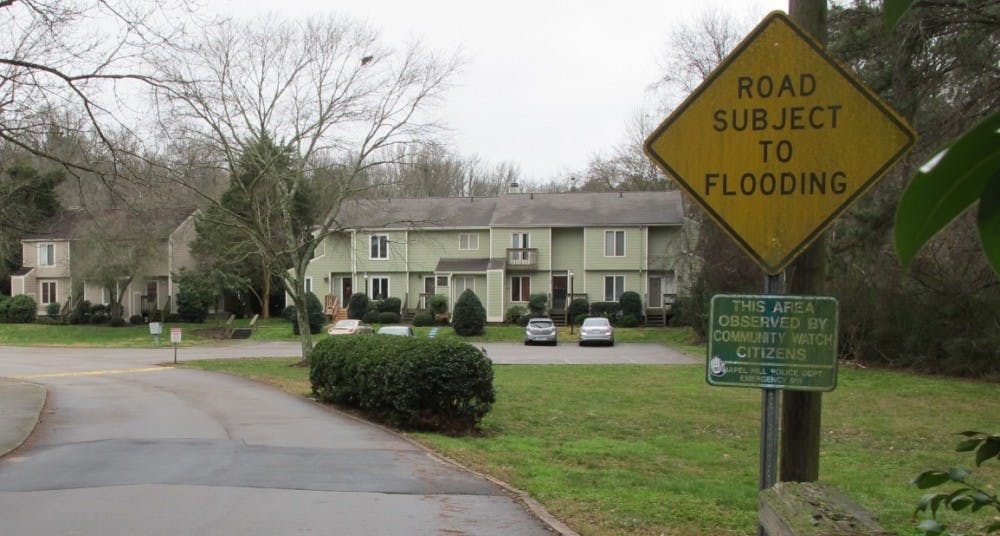Between Monday and Wednesday, the National Weather Service is forecasting three to six inches of rain, which could impact low-lying areas in Chapel Hill. These areas are prone to flooding.
Specific areas of potential flooding include S. Estes Drive in the vicinity of Willow Drive, Camelot Village Apartments on S. Estes Drive, Brookwood Community on S. Estes Drive, South Estes public housing neighborhood on Estes Drive Extension near University Place, Bolin Creek out of its banks, Cleland Road between Kendall Drive and Hayes Road, Franklin Street at Mellette Street, and E. Franklin Street at Park Place, according to an email released by the Town of Chapel Hill.
To protect yourself against a flood, the town of Chapel Hill urges residents to seek higher ground, avoid walking through moving water, parking in low-lying areas and driving in flooded areas. Here are a few more things you'll want to keep in mind if the waters start to rise.
What to do if your house floods
ReadyNC stresses the importance of securing important paperwork such as insurance policies, medical records and prescriptions in the case of flooding.
Cover windows with storm shutters, and move your vehicles into a garage or park them near the home away from trees.
In order to secure items, bring all bulky objects inside and tie down the ones you are unable bring in.
Fill your bathtubs and sinks with clean water so that you have access to this later.
Use sandbags based on your predicted floor depths. These will divert the water.



